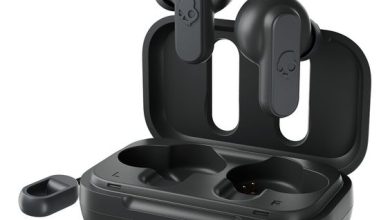What Happens If You Don’t Sterilize Baby Bottles

Sterilizers have become a common sight in modern houses with newborn babies and toddlers. Pediatricians recommend the use of high quality sterilizers for thorough cleaning of the feeding bottles after each use. This is imperative to maintain the health of infants. Clean and hygienic bottles keep stomach infections and other diseases at bay and facilitate proper growth and development of the babies. Nevertheless, many new parents dismiss the importance of sterilizers. They wash the bottles the good old way and continue to reuse them week after week. But is this the right practice? What happens if you don’t sterilize baby bottles? Let’s find out. By the time you finish reading this piece of writing, you will also learn the correct way to sterilize the feeding bottle and the type of bottle you should choose for your little ones. So, read on.
The Need to Sterilize Feeding Bottles
Washing the feeding bottle thoroughly with soap and brush is necessary. It helps get rid of the leftover milk and the germs that may penetrate because of it. But is it enough? No, it is just a part of the process. You may call it the first step in the process that needs to be followed by thorough sterilizing of the bottle. It is important to sterilize the feeding bottles because the process facilitates thorough cleaning to remove traces of microorganisms that give way to various infections and illnesses.
What if You Do Not Sterilize Feeding Bottles?
Here’s what happens if you skip the crucial step of sterilizing the feeding bottles after use:
Bacterial Infection
Bottles that are not sterilized become a breeding ground for bacteria that enter the baby’s body easily as they have milk leading to bacterial infection. As a result, your infant may suffer from food poisoning, vomiting or fever.
Gastroenteritis
One the the problems that your baby is likely to incur if you do not sterilize the feeding bottle is gastroenteritis. This causes problem in the intestines resulting in vomiting, diarrhea and stomach ache. It has been observed that parents who neglect the importance of sterilizing the bottle often see their infants going through these painful conditions.
The problem cannot be cured easily. It takes time to recover. Incurring this problem frequently can deteriorate the baby’s health and hamper growth.
Viral Infections
No matter how much you clean and rinse the feeding bottles, some germs and microbes are hard to get rid of. It is important to sterilize the bottle in an electric sterilizer or using other methods in order to remove traces of these harmful organisms that can cause serious illnesses such as Hepatitis A and Rotavirus. While HAV can cause irreparable damage to an infant’s liver, Rotavirus can lead to extreme dehydration and diarrhea.
Stepwise Procedure to Sterilize the Feeding Bottle
Now you know how important it is to sterilize the feeding bottle but do you know how to carry out the procedure? Here’s the stepwise procedure to guide you through:
Preparation for Sterilizing the Bottle
As mentioned above, before sterilizing the bottle, it is important to clean it properly with soapy water and bottle brush. Alternatively, you can put the bottle in the dishwasher to clean and prep it for sterilization. It is important to rinse the bottle with clean water.
Using an Electric Sterilizer
Electric Sterilizers are readily available in the market. They come with well-defined instructions that are easy to follow. Just read the instructions carefully and follow through. In most sterilizers, it is advised to place the bottle facing downloads for proper cleaning. Steam sterilizing can also be done in the microwave. But try it only after reading the complete procedure carefully.
In Boiling Water
You can also sterilize the feeding bottle and other feeding equipment using boiling water. How? Take a vessel big enough to accommodate the bottle. Add water to it and place the bottle. Allow it to boil for at least 10 minutes. Cover the vessel and ensure the bottle is immersed in the water all this while.
Also ascertain that the bottle is made of a material which is safe to boil and doesn’t crack or deform during the process. This problem can be avoided by purchasing good quality feeding bottle from a reputed stainless steel feeding bottles manufacturer.
Using Cold Water Sterilizing Solution
Yet another technique of sterilizing the feeding bottles is with the use of cold water sterilizing solution. Never heard about it? Well, the procedure is simple. You need to immerse the feeding bottle completely in the sterilizing solution and leave it for 30 minutes. You may use a cover to ensure the bottle remains in the solution and does not float on it. As you do this, just make sure no air bubbles are present in the bottle.
To carry out the procedure accurately, we recommend going through the manufacturer’s manual.
In conclusion, merely cleaning the feeding bottles with soapy water and brush is not enough to get rid of the harmful germs and bacteria. Sterilizing the bottle is necessary to clean it thoroughly and make it safe for next use. If you do not sterilize the feeding bottles you may be putting your baby’s health at risk as germs and viruses are likely to penetrate in them. Gastroenteritis, bacterial infections and viral illnesses are among the common problems that grip infants who are fed milk in bottles that aren’t sterilized properly. Parents can keep such serious health problems at bay by sterilizing the feeding bottles in an electric sterilizer or by using cold sterilizing solution. The method of boiling also proves to be effective when it comes to sterilizing the feeding bottles. There are quite a few single wall stainless steel water bottle manufacturers that offer stainless steel feeding bottles in addition to top quality water bottles. These feeding bottles remain intact during intense sterilizing procedures and thus come out squeaky clean. They are the best types of feeding bottles for infants. As parents, you just need to make sure you clean and sterilize them properly after every use. https://dewarticles.com/




